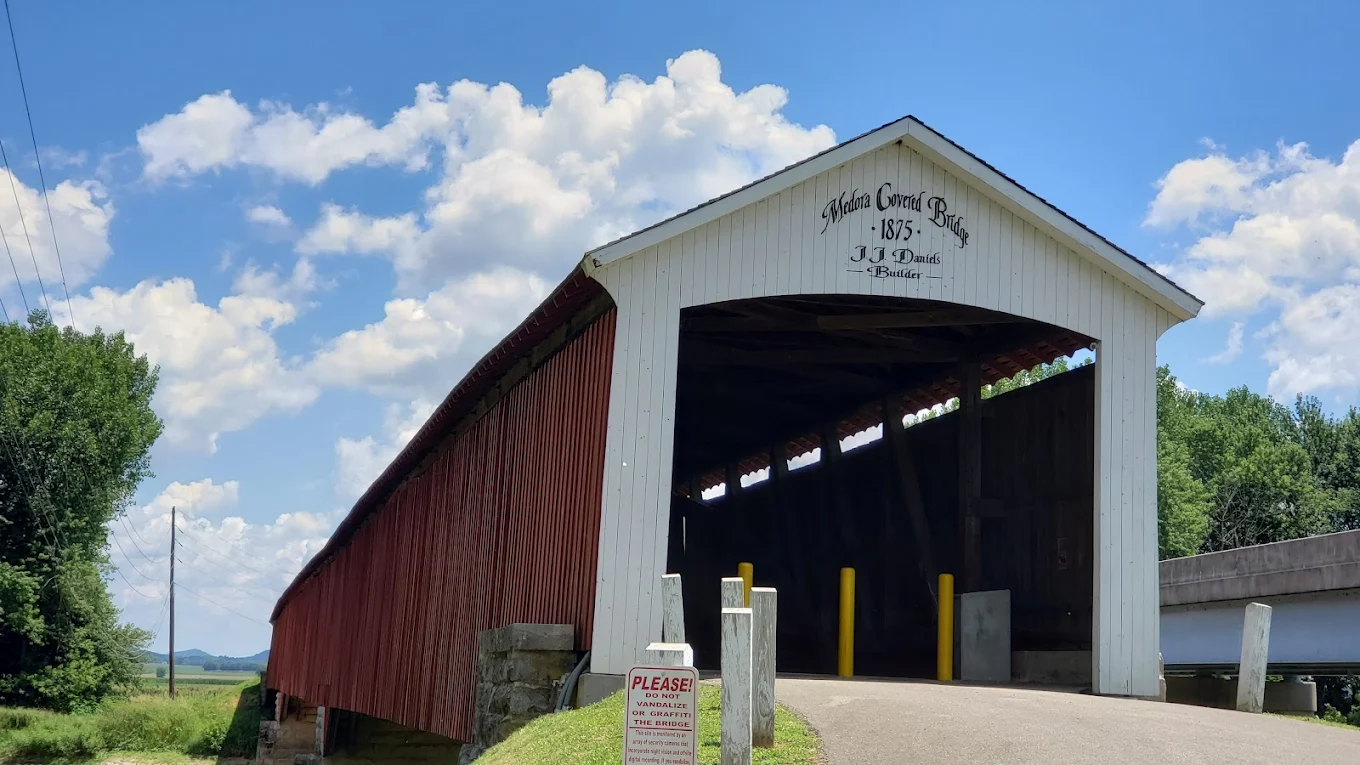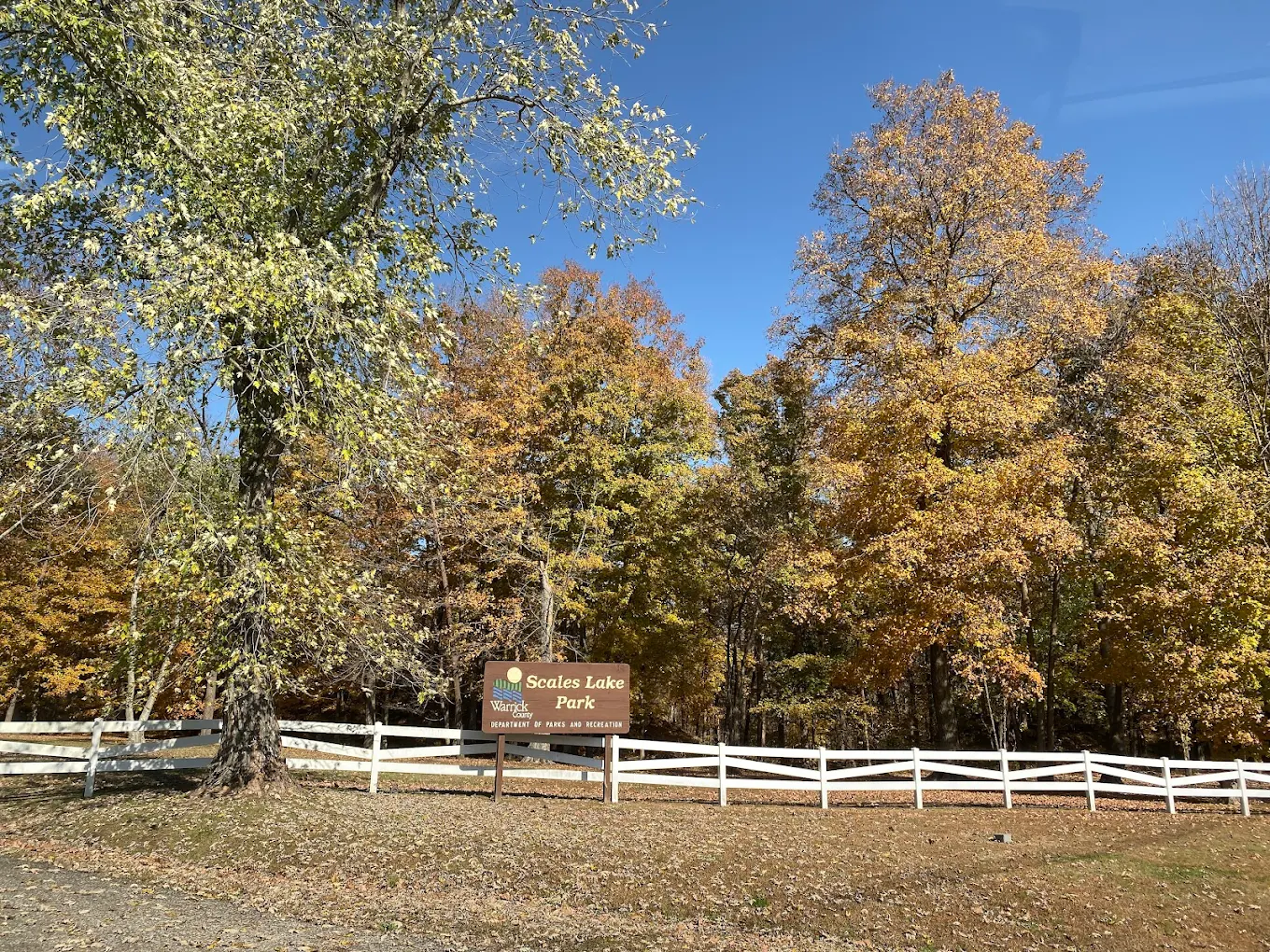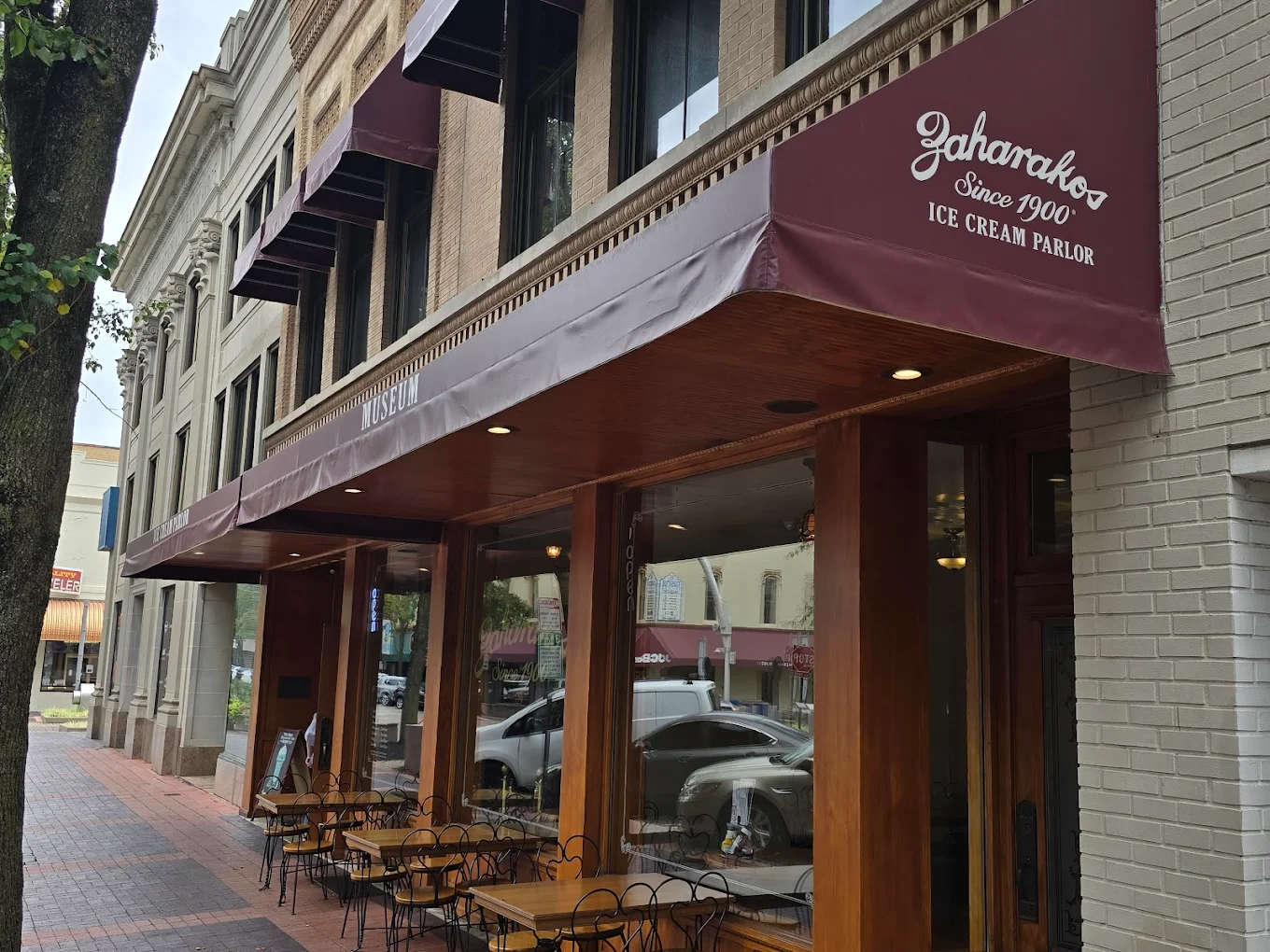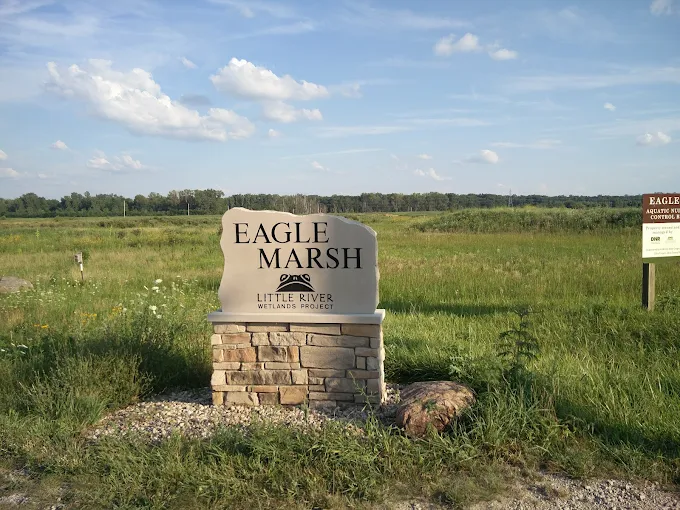The Medora Covered Bridge in Medora, Indiana, is a historic landmark and one of the most photographed spots in Jackson County, admired for its striking red exterior, scenic surroundings, and remarkable length.
Spanning the East Fork of the White River, the bridge has stood since the late 19th century and is celebrated not only for its picturesque charm but also for its engineering significance. Whether viewed in the golden light of sunrise, framed by autumn leaves, or dusted with winter snow, the Medora Covered Bridge offers a timeless, postcard-perfect scene.
A Record-Setting Bridge
Built in 1875, the Medora Covered Bridge holds the distinction of being the longest historic covered bridge in the United States. Measuring approximately 434 feet in length, it is composed of three spans supported by Burr arch trusses, a design prized for its strength and durability. Its impressive size and architectural beauty make it a draw for history buffs, photographers, and travelers alike.
Construction and Design
The bridge was constructed by master bridge builder J. J. Daniels, using locally sourced timber and traditional joinery techniques. The combination of massive wooden arches and truss work allows the bridge to support significant weight while withstanding seasonal flooding and river currents.
Preservation Efforts
Over the years, the bridge has undergone several restorations to maintain its structural integrity and appearance. Preservation efforts have included repairing timbers, repainting the iconic red siding, and reinforcing foundations, ensuring the bridge remains both functional and beautiful.
Photographic Appeal
The Medora Covered Bridge’s appeal to photographers is undeniable. Its length creates a dramatic vanishing point when shot from inside, while its bright red exterior stands out vividly against the natural backdrop of the river and countryside.
Seasonal Beauty
In spring, wildflowers and budding trees frame the bridge in fresh greens and pastels. Summer brings lush foliage, while autumn transforms the scene into a tapestry of reds, oranges, and golds. Winter snow adds a serene stillness, accentuating the clean lines and bold color of the bridge.
Popular Angles
Some of the most popular shots include standing at the entrance looking down the full length of the bridge, capturing the reflection in the river below, or photographing from the adjacent riverbank during sunrise or sunset.
Visiting the Bridge
Today, the Medora Covered Bridge is open to pedestrian traffic, allowing visitors to walk its entire length and admire its craftsmanship up close. Interpretive signs at the site share historical information, making it both a scenic and educational stop.
Access and Parking
The bridge is located just outside the small town of Medora, with parking areas nearby. It’s easily accessible from local roads, and visitors can enjoy a short stroll to reach the structure.
Local History and Significance
When it was built, the Medora Covered Bridge served as a critical transportation link for farmers, merchants, and travelers crossing the East Fork of the White River. Covered bridges were common in the 19th century, designed to protect the wooden structure from the elements and extend its lifespan.
Economic and Cultural Impact
The bridge contributed to the growth of Medora and surrounding communities by improving access to markets and resources. Over time, it became more than just infrastructure—it became a point of pride and a symbol of local heritage.
National Recognition
The Medora Covered Bridge is listed on the National Register of Historic Places, acknowledging its importance as both a feat of engineering and a cultural treasure. This designation helps protect it for future generations.
Exploring the Surrounding Area
Medora and the surrounding Jackson County countryside offer additional attractions for visitors making the trip to the bridge. The quiet rural roads, rolling farmland, and nearby small towns make for a peaceful day trip.
Nearby Points of Interest
Visitors often combine a stop at the bridge with trips to nearby parks, antique shops, and local diners. The scenic drive through the county offers plenty of opportunities for photography and relaxation.
Outdoor Recreation
The East Fork of the White River provides opportunities for fishing, canoeing, and wildlife viewing. Birdwatchers may spot herons, eagles, and other native species in the area around the bridge.
Tips for Visiting and Photographing
To capture the best images of the Medora Covered Bridge, plan your visit during the early morning or late afternoon, when the light is softer and shadows are longer. If possible, visit during different seasons to experience the full range of its beauty.
Photography Equipment
A wide-angle lens is ideal for capturing the full length of the bridge from the inside, while a telephoto lens can highlight details in the truss work and siding. Tripods are useful for low-light shots, especially at sunrise, sunset, or on overcast days.
Respecting the Site
As a historic structure, the bridge should be treated with care. Visitors are encouraged to stay on designated paths, avoid climbing on the structure, and help keep the area clean by packing out trash.
Why the Medora Covered Bridge Stands Out
While Indiana is home to many covered bridges, the Medora Covered Bridge’s combination of record-setting length, vivid color, and scenic location makes it truly unique. It embodies the craftsmanship of a bygone era while remaining a living part of the community’s identity.
A Symbol of Enduring Craftsmanship
The bridge is a testament to the skill of its builder and the value of preserving historic landmarks. Walking across it is like stepping back in time, offering a tangible connection to the people who traveled here more than a century ago.
Memories That Last
Whether you’re a professional photographer, a history enthusiast, or simply someone looking for a beautiful place to visit, the Medora Covered Bridge offers an experience that’s equal parts scenic and meaningful. Its beauty and history ensure it will remain a favorite subject for cameras—and hearts—for generations to come.




